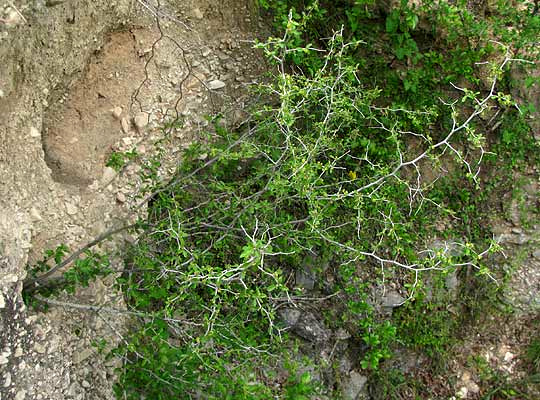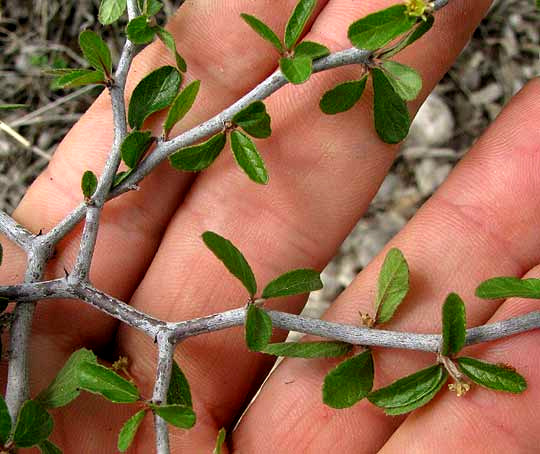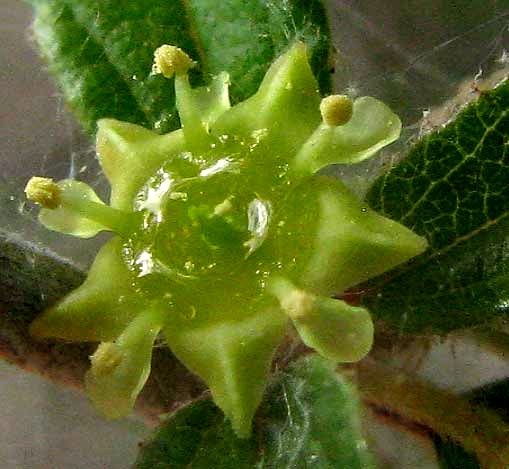Excerpts from Jim Conrad's
Naturalist Newsletter
from the May 19, 2013 Newsletter issued from the Frio Canyon Nature Education Center in northern Uvalde County, southwestern Texas, on the southern border of the Edwards Plateau; elevation ~1750m (~5750 ft); N29.62°, W99.86°; USA
CLIFFSIDE HOG PLUM
Behind the cabin the little Dry Frio River comes up to a vertical wall about 20 feet high and the upper part of that wall is composed of gravel embedded in marly mud that has solidified into rock -- apparently millions of years ago. The mud was so high in calcium carbonate that basically it hardened into a cement wall.. Such a wall wouldn't seem to be much of a place for a bush to grow from, but several do issue from cracks. Below, you can see such a bush with its freshly emerged leaves on zigzagging branches:

Just by looking at this bush you can see that it's tough and wiry. A close-up of its pale stems and surprisingly small leaves is shown below:

In arid areas like ours, whenever I encounter a particularly tough, maybe spiny, much-branched bush like this, the first plant family to come to mind is the Buckthorn Family, the Rhamnaceae, because that family produces lots of dryness-loving, smallish, scratchy-type bushes and small trees. Therefore, I wasn't much surprised when flowers on the above plant turned out to be unmistakably of the Buckthorn Family, as you can see below:

Notice how the five stamens with their globular, pollen-producing anthers rise opposite the five small petals. In the vast majority of blossoms, stamens alternate with the petals, not rise opposite them. Also, the stamen bases emerge from below the margins of a conspicuous, fleshy disc that in our picture is shiny with nectar it exudes to attract pollinators; it's a "nectariferous disc." The disc sits atop the ovary, which is semi-inferior.
This tough little bush goes by several common names, including Hog Plum, Texas Snakewood, Texas Colubrina, Purple Haw and Guajalote. It's COLUBRINA TEXENSIS, endemic mostly to arid northeastern Mexico and across the border into the southwestern quarter of Texas. I read that it forms dense thickets in which the zigzagging branches fairly lock onto one another. I could find no spines on our bush.
Hog Plum thickets make important wildlife cover. Gardeners appreciate the shrub's ability to survive extreme drought conditions. I'm looking forward to tasting its fruits, or "hog plums."